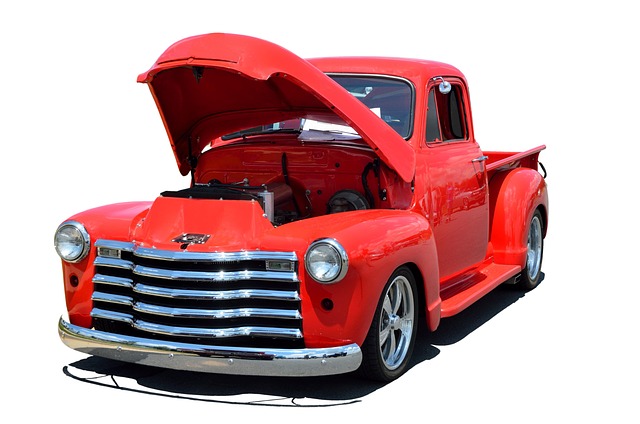Looking to register your car in California? This comprehensive guide walks you through every step, from gathering essential documents to navigating the DMV VIN verification process. We’ll break down the different registration types, ensure you have all necessary paperwork, and provide clear instructions on submitting your application with ease. Streamline the process today and hit the road confidently!
- Understanding the California Car Registration Process
- Gather Required Documents for Car Registration
- Perform DMV VIN Verification: Steps and Importance
- Choosing a Suitable Registration Type in California
- Submitting Your Application and Paying Fees
Understanding the California Car Registration Process

Understanding the California Car Registration Process
In California, registering a car involves multiple steps that can seem daunting at first. However, by following the state’s guidelines and utilizing resources like the Department of Motor Vehicles (DMV), the process becomes more manageable. The initial step is to ensure your vehicle meets all safety standards and emissions requirements. This includes passing a smog test, if applicable, which can be done at certified testing stations across the state. Once your car has passed the necessary inspections, you’ll need to gather essential documents such as proof of ownership (title), proof of insurance, and identification.
A crucial part of the registration process in California involves what’s known as DMV VIN verification. This requires you to provide your vehicle’s unique Vehicle Identification Number (VIN) for inspection. You can do this online or by visiting a local DMV office. For added convenience, many services offer mobile VIN verification using a portable scanner, allowing you to complete this step from the comfort of your home or on the go with a mobile vin verifier app. This technology streamlines the registration process, making it more efficient and less time-consuming for California drivers.
Gather Required Documents for Car Registration

Before you start the registration process for your car in California, ensure you have all the necessary documents. The key document required is the Vehicle Identification Number (VIN) verification from the Department of Motor Vehicles (DMV). This step involves a thorough inspection of your vehicle’s details to confirm its authenticity and history. A mobile VIN inspection or mobile VIN verifier can be especially useful here, as these services allow for convenient and quick verifications right at your location.
Additionally, you’ll need proof of insurance, registration from the previous state (if applicable), and possibly a title document. It’s crucial to check with the DMV for any specific requirements based on your vehicle’s age or type. Having all these documents in order will streamline the registration process and ensure a smoother experience at the DMV.
Perform DMV VIN Verification: Steps and Importance

Before registering your car in California, performing a DMV VIN (Vehicle Identification Number) verification is a crucial step. This process involves confirming key information about your vehicle through its unique VIN, ensuring it meets all legal standards. You can do this by taking your car to a designated DMV location or using a mobile vin verifier for a more convenient option.
The steps are straightforward: provide your vehicle’s details and the VIN itself, which is typically found on the driver’s side of the dashboard or in the door jamb. A skilled inspector will cross-reference this information against their databases to verify the car’s history, including its age, previous owners, and any reported accidents or outstanding issues. This inspection is vital as it helps prevent fraud, ensures safety, and allows the DMV to issue a valid registration, making your vehicle roadworthy and legally compliant in California.
Choosing a Suitable Registration Type in California

When registering your car in California, understanding the different registration types is crucial. The state offers various options depending on your vehicle’s age and use. One key consideration is whether to opt for a traditional registration or explore alternative methods like a classic car registration, which has specific requirements and benefits.
For instance, if your car is newer and you primarily use it as a daily driver, the standard registration process involves a DMV (Department of Motor Vehicles) title and registration. This process includes essential steps such as completing an application, providing proof of insurance, and undergoing a DMV vin verification, where they check the vehicle’s identification number (VIN) to ensure its authenticity. Alternatively, if you own a vintage or classic car, specialized registration options like historic vehicle registration may be available, offering benefits like tax exemptions and simplified inspection procedures, which can be facilitated by even a mobile VIN verifier.
Submitting Your Application and Paying Fees

After completing your vehicle’s registration application, it’s time to submit it along with the required documents and fees to the California Department of Motor Vehicles (DMV). The process typically involves a few key steps. First, ensure your vehicle meets all safety and emissions standards through a successful vin inspection. This can often be done conveniently through mobile vin verification services, making it easier than ever to confirm your vehicle’s integrity.
Once your car passes the vin inspection, you’ll need to pay the necessary fees. These include registration costs and tax, which may vary depending on your vehicle’s type and age. The DMV offers several payment methods, so be prepared with your preferred option to streamline the process. Remember that prompt submission and payment will help ensure a faster turnaround time for your car’s registration.
Registering a car in California is a straightforward process that requires understanding the necessary steps and gathering the right documents. By performing a DMV VIN verification, ensuring all paperwork is in order, and selecting the appropriate registration type, you can efficiently complete the registration. Remember to submit your application and pay the required fees on time to keep your vehicle legal and avoid any penalties.
